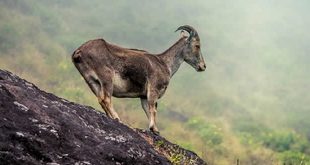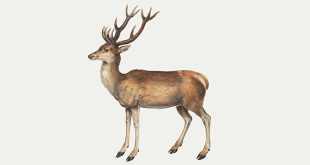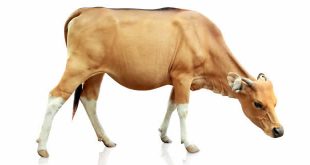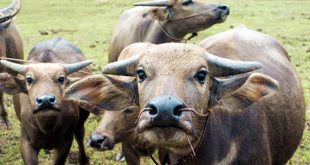 Tapir — Tapirs are large browsing mammals, roughly pig-like in shape, with short, prehensile snouts. They inhabit jungle and forest regions of South America, Central America, and Southeast Asia. All four species of tapir are classified as endangered or vulnerable. Their closest relatives are the other odd-toed ungulates, including horses and rhinoceroses.
Tapir — Tapirs are large browsing mammals, roughly pig-like in shape, with short, prehensile snouts. They inhabit jungle and forest regions of South America, Central America, and Southeast Asia. All four species of tapir are classified as endangered or vulnerable. Their closest relatives are the other odd-toed ungulates, including horses and rhinoceroses.
Size varies between types, but most tapirs are about 2 meters (7 ft) long, stand about a meter (3 ft) high at the shoulder, and weigh between 150 and 300 kg (330 to 700 lb). Coats are short and range in color from reddish-brown to grey to nearly black, with the notable exceptions of the Malayan Tapir, which has a white saddle-shaped marking on its back, and the Mountain Tapir, which has longer, wooly fur. All tapirs have oval, white-tipped ears, rounded, protruding rear ends with stubby tails, and splayed, hoofed toes, with four toes on the front feet and three on the hind feet, which help them walk on muddy and soft ground. Baby tapirs of all types have striped-and-spotted coats for camouflage. Females have a single pair of mammary glands.
The proboscis of the tapir is a highly flexible structure, able to move in all directions, allowing the animals to grab foliage that would otherwise be out of reach. Tapirs often exhibit the flehmen response, a posture in which they raise their snouts and show their teeth, in order to detect scents. This response is frequently exhibited by bulls sniffing for signs of other males or females in oestrus in the area. Proboscis length varies among species; Malayan Tapirs have the longest snouts and Brazilian Tapirs have the shortest. The evolution of tapir probosces, made up almost entirely of soft tissues rather than bony internal structures, gives the Tapiridae skull a unique form in comparison to other perissodactyls, with a larger sagittal crest, orbits positioned more rostrally, a posteriorly telescoped cranium, and a more elongated and retracted nasoincisive incisure.
Although they frequently live in dryland forests, tapirs with access to rivers spend a good deal of time in and under the water, feeding on soft vegetation, taking refuge from predators, and cooling off during hot periods. Tapirs near a water source will swim, sink to the bottom and walk along the riverbed to feed, and have been known to submerge themselves under water to allow small fish to pick parasites off their bulky bodies. Along with fresh water lounging, tapirs often wallow in mud pits, which also helps to keep them cool and free of insects.
 Kids Portal For Parents India Kids Network
Kids Portal For Parents India Kids Network






